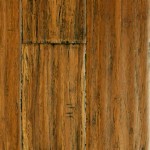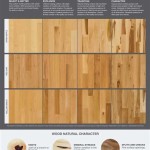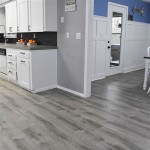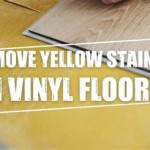Water Resistant Laminate Wood Flooring: A Comprehensive Guide
Laminate wood flooring presents an attractive and cost-effective alternative to solid hardwood. It replicates the look and feel of natural wood while offering enhanced durability and easier maintenance. Among the various types of laminate flooring, water-resistant laminate stands out for its ability to withstand moisture exposure, making it a practical choice for areas prone to spills or humidity. Understanding the nuances of water-resistant laminate, its benefits, limitations, and proper care is essential for making an informed purchasing decision.
Laminate flooring, in general, is constructed from several layers bonded together. Typically, these layers include a base layer for stability, a core layer made of high-density fiberboard (HDF) or medium-density fiberboard (MDF), a decorative layer that provides the wood-look appearance, and a wear layer for protection. The water-resistant properties are primarily achieved through treatments and materials used in the core and the interlocking mechanism of the planks. The goal is to minimize water absorption and prevent damage to the flooring structure.
Understanding Water Resistance in Laminate Flooring
It's crucial to differentiate between water-resistant and waterproof laminate flooring. While water-resistant laminate can withstand splashes and spills for a reasonable amount of time, it is not designed for prolonged exposure to standing water. Waterproof laminate, on the other hand, offers a higher degree of protection against water damage due to its completely sealed construction and materials. Water-resistant laminate provides a buffer against everyday accidents, but it is not a substitute for proper moisture control in the home.
The level of water resistance is determined by several factors. The density of the core material plays a significant role. Higher-density cores absorb less water and are therefore more resistant to swelling and warping. The protective coatings applied to the surface also contribute to water resistance by creating a barrier that inhibits water penetration. Additionally, the tightness of the interlocking system is vital. A tightly sealed joint prevents water from seeping between the planks and damaging the subfloor.
Manufacturers often use specific terminology to describe the water-resistant properties of their laminate flooring products. Terms like "splash-resistant," "water-repellent," and "moisture-resistant" are common. However, it is important to carefully review the product specifications and warranty information to understand the actual level of protection offered. The warranty may specify the duration water can be left standing without causing damage and the types of spills covered.
The installation process also significantly impacts the water resistance of laminate flooring. Proper installation techniques, including the use of moisture barriers and appropriate sealing around the perimeter of the room, are crucial for preventing water damage. Even the most water-resistant laminate can fail if installed incorrectly or if exposed to excessive moisture from below.
Benefits of Choosing Water Resistant Laminate Flooring
Water resistant laminate flooring offers a range of advantages over traditional laminate and other flooring options. One of the primary benefits is its enhanced durability in moisture-prone areas. Kitchens, bathrooms, and entryways are particularly susceptible to spills and humidity. Water-resistant laminate provides a more resilient surface that can withstand these conditions without significant damage.
The ease of maintenance is another significant advantage. Water-resistant laminate is generally easy to clean and maintain. Spills can be wiped up quickly without leaving stains or causing swelling. Regular sweeping and occasional mopping with a damp cloth are typically sufficient to keep the floor looking its best. However, it is important to avoid using excessive water or harsh cleaning chemicals, as these can still damage the surface over time.
Aesthetic appeal is another important consideration. Water resistant laminate is available in a wide variety of styles, colors, and textures, allowing homeowners to achieve the desired look without the cost and maintenance of solid hardwood. The decorative layer accurately replicates the grain patterns and textures of different wood species, providing a realistic and visually appealing surface.
Cost-effectiveness is also a major factor driving the popularity of water-resistant laminate. It is typically less expensive than solid hardwood, engineered hardwood, and waterproof flooring options. This makes it an attractive choice for budget-conscious homeowners who want the look of wood without the hefty price tag. Furthermore, the ease of installation can further reduce costs, particularly for DIY projects.
Improved hygiene is another benefit, especially for households with children or pets. The smooth, non-porous surface of water-resistant laminate is less likely to harbor bacteria, mold, and allergens than carpet or other porous flooring materials. This can contribute to a healthier indoor environment, particularly for individuals with allergies or respiratory sensitivities.
Key Considerations When Selecting Water Resistant Laminate
Choosing the right water resistant laminate flooring requires careful consideration of several factors. The intended use of the room is paramount. High-traffic areas, such as hallways and living rooms, require a thicker wear layer to withstand daily wear and tear. Bathrooms and kitchens, where moisture exposure is more frequent, require a higher degree of water resistance.
The thickness of the laminate plank is another important consideration. Thicker planks generally offer greater stability, durability, and sound insulation. They are also more resistant to flexing and bending, which can contribute to a longer lifespan. A thicker wear layer also helps to protect the decorative layer from scratches and scuffs.
The quality of the core material is critical for water resistance. High-density fiberboard (HDF) is generally preferred over medium-density fiberboard (MDF) because it is denser and absorbs less water. Look for products that specify the density of the core material to ensure adequate water resistance.
The interlocking system is also crucial. A tight, secure interlocking system prevents water from seeping between the planks. Look for products with a click-lock system that creates a seamless and watertight seal. Some manufacturers also offer enhanced locking mechanisms that provide even greater protection against water penetration.
The surface texture and finish can also affect water resistance and slip resistance. A textured surface can provide better traction, reducing the risk of slips and falls, particularly when the floor is wet. A durable finish can protect the surface from scratches, stains, and fading, prolonging the lifespan of the flooring.
Warranty coverage is an important consideration. Read the warranty carefully to understand the extent of coverage and any limitations. A comprehensive warranty provides peace of mind and protects against manufacturing defects and water damage within a specified timeframe. Pay attention to the specific conditions that void the warranty, such as improper installation or excessive moisture exposure.
Finally, consider the overall aesthetic compatibility with the existing décor. Water resistant laminate is available in a wide range of colors, styles, and textures. Choose a product that complements the existing furniture, wall colors, and architectural style of the room. Sample planks should be viewed in the actual room lighting to ensure an accurate color match.
In summary, water-resistant laminate flooring offers a practical and aesthetically pleasing solution for various areas of the home. By understanding the key features, benefits, and limitations of this type of flooring, homeowners can make an informed decision and enjoy a durable and attractive surface for years to come. Careful selection, proper installation, and regular maintenance are essential for maximizing the lifespan and performance of water-resistant laminate flooring.

Water Resistant Laminate Flooring Beauty And Durability In Every Drop Word Of Mouth Floors

Advantages Of Water Resistant Laminate Flooring

Waterproof Laminate Flooring Review Pros And Cons

Water Resistant Laminate Flooring Beauty And Durability In Every Drop Word Of Mouth Floors

Trafficmaster Kettle Keep Oak 8 Mm T X In W Water Resistant Laminate Wood Flooring 637 Sqft Pallet 360831 27096 P The Home Depot

Solid Wood Laminate Floor Water Resistant And Scratch For Home Clearhalo

Waterproof Laminate Flooring In Selden Mt Sinai Suffolk County Ny First Class Wood

Home Decorators Collection Fairville White Oak 9 1 2 In W Water Resistant Laminate Wood Flooring 19 95 Sq Ft Case Hdcwr30 The Depot

Reclaimed Oak Water Resistant Laminate Floor Golden Select

How To Install Waterproof Laminate Flooring Twenty Oak
Related Posts








